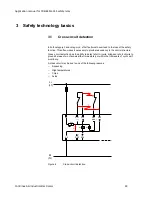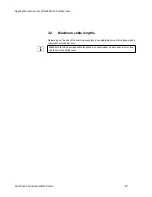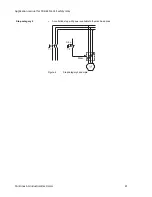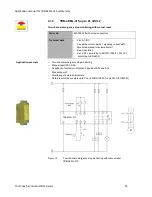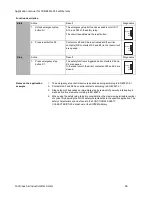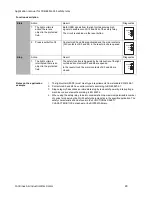
Application manual for YRB-4EML-31S safety relay
Contrinex AG Industrial Electronics
14
2.2.6
Determination of the achieved PL for the overall safety
function
For subsystems with integrated diagnostic functions such as safety devices and safety
controllers, the achieved PFH
d
and PL are provided by the manufacturer with the
specification of the category.
For subsystems consisting of discrete components (e.g., switches, contactors, valves,
etc.), the PFH
d
value is determined from the category, DC, and MTTF
d
. For components
that are subject to wear, the MTTF
d
is determined based on the number of operating cycles
using the B10d value provided by the component manufacturer.
In addition, for category 2 or higher the effect of common cause failure (CCF) must also be
considered.
2.2.7
Verification of the achieved PL
Each individual subsystem and the entire safety chain must both meet the requirements of
the necessary PL
r
. This includes both the quantitative evaluation and the consideration of
systematic aspects, such as proven components and safety principles.
The systematic aspects include:
– Correct dimensioning of components
– Consideration of expected operating conditions and ambient conditions
– Use of basic and proven safety principles
– Avoidance of specification errors and software errors through testing
2.2.8
Validation
The last step should check whether the selected measures achieve the necessary risk
reduction and therefore the protection objectives of the risk assessment. The result of the
validation process is included in the final risk assessment.
The purpose of the validation process is to confirm the specification and level of conformity
of the design of safety-related parts of the control system (SRP/CS) within the overall
specifications for the safety requirements of the machinery. Before validation of the design
of the SRP/CS or the combination of SRP/CS that contains the safety function, the
specification requirement for the safety function must be confirmed. Validation involves
performing analysis and function tests under normal conditions in accordance with the
validation plan.
EN ISO 13849-2 contains detailed requirements and describes the basic procedure for the
individual validation processes.


















